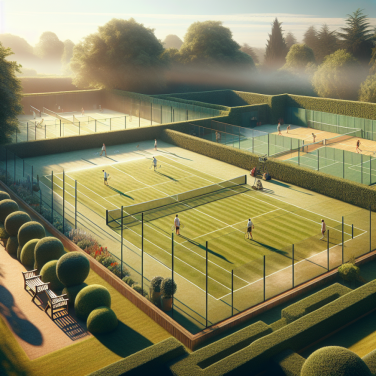Unraveling the History and Evolution of Rodeos in America
Rodeos—known for being a thrilling spectacle filled with daredevil maneuvers, intense competition, and heart-racing suspense—have been an integral part of American culture since the 1800s. They offer a rich tapestry of tradition, skill, bravery, and grit woven into the very fibers of the country's history and cowboy culture.
The earliest roots of the rodeo can be traced back to the 16th century when Spanish explorers brought over their gonzo traditions and handling techniques for livestock. American cowboys adopted and adapted these techniques, which eventually became a crucial aspect of their daily lives in livestock range.
In the 1800s, the American West was dotted with ranches. It was on these rugged terrains that rodeos were born. They initially served as a form of entertainment and competition amongst cowboys after cattle wrestlings. The challenges were generally tasks derived from their everyday duties, like bronc riding, tie-down roping, and steer wrestling—events that are still a part of modern rodeos.
July 4th, 1883, is a significant date in the narrative of American rodeos. That was when Pecos, Texas, held what is widely regarded as the first official rodeo event. It was not just a competition between cowboys; it was formally organized, complete with prizes such as money and saddles.
Following this, rodeos began growing in popularity and becoming more organized towards the end of the 19th century. In 1897, the Cheyenne Frontier Days rodeo was established in Wyoming, and it continues to hold prominent rodeo events to this day. At this point, rodeos were becoming fixtures in Western town celebrations, further cementing their place in American culture.
With the dawn of the 20th century, rodeos evolved further, becoming more inclusive and representative of the diverse populations in the American West. There was a surge in the involvement of women and Native American contestants in rodeo events, bringing in audiences from various spectrums. Early barrier-breakers included Prairie Rose Henderson, who started rodeo riding in 1901, and Jackson Sundown, a Native American bronc rider who won a world championship in 1916.
As the 20th century progressed, rodeos became increasingly professional. The creation of the Rodeo Association of America (RAA) in 1929 helped legitimize and provide a framework for rodeo events.
Read also:
The Historical Journey: Unveiling When Soccer Was Invented"
The Cultural Significance of Rodeos: A Salute to the American Cowboy Legacy
Rodeos have been a part of American culture for more than a century, not only serving as an exciting form of entertainment, but also as an authentic reflection of our country's western past. These events, typically characterized by a combination of competitive and exhibition activities, pay homage to the centuries-old traditions and experiences of the American cowboy, making the rodeo a kind of living history.
The first thing one might notice at a rodeo is the intense physical prowess of the contestants. This sport requires a relentless combination of strength, agility, and courage. Just as cowboys of old would have to master these traits to survive the daily challenges of life in the American West, modern rodeo competitors must embody these qualities to succeed in events like bull riding, steer wrestling, and barrel racing.
Beyond just the physical tests, rodeos also have a deep cultural significance that goes hand in hand with the hearty, resilient spirit of the cowboy. Each event within a rodeo speaks to a different aspect of the cowboy lifestyle. For instance, bronc riding harks back to the untamed wilderness of the West, where cowboys regularly had to break and ride wild horses. Similarly, roping events reflect the daily chores of working on ranches where quick and accurate lassoing could mean the difference between life and death.
The long-standing tradition of rodeo also bears significance for many Indigenous American cultures. Several rodeo events, such as bareback riding, are said to have been influenced by Native American horse riding techniques. Furthermore, many tribal rodeos continue to be held across the U.S. These events help preserve Indigenous cultures and histories, alongside celebrating the shared cowboy heritage.
Yet, the cultural significance of rodeos isn’t restricted to a nostalgic reflection of the cowboy era. Rodeos also serve as a community-binding event, bringing people from various walks of life together. The grandstands at any rodeo are sure to be filled with a broad cross-section of America, both rural and urban, old and young, locals and tourists. With the shared excitement of the competition, rodeos often act as an intersection of various American cultures, fostering understanding and camarity.
Many towns, particularly those in the west, have used rodeos as community milestones and annual celebrations. Often paired with fairs, parades, and dances, these rodeos become integral to the local cultural identity. In a sense, these events have become synonymous with a quintessential Americana experience.




